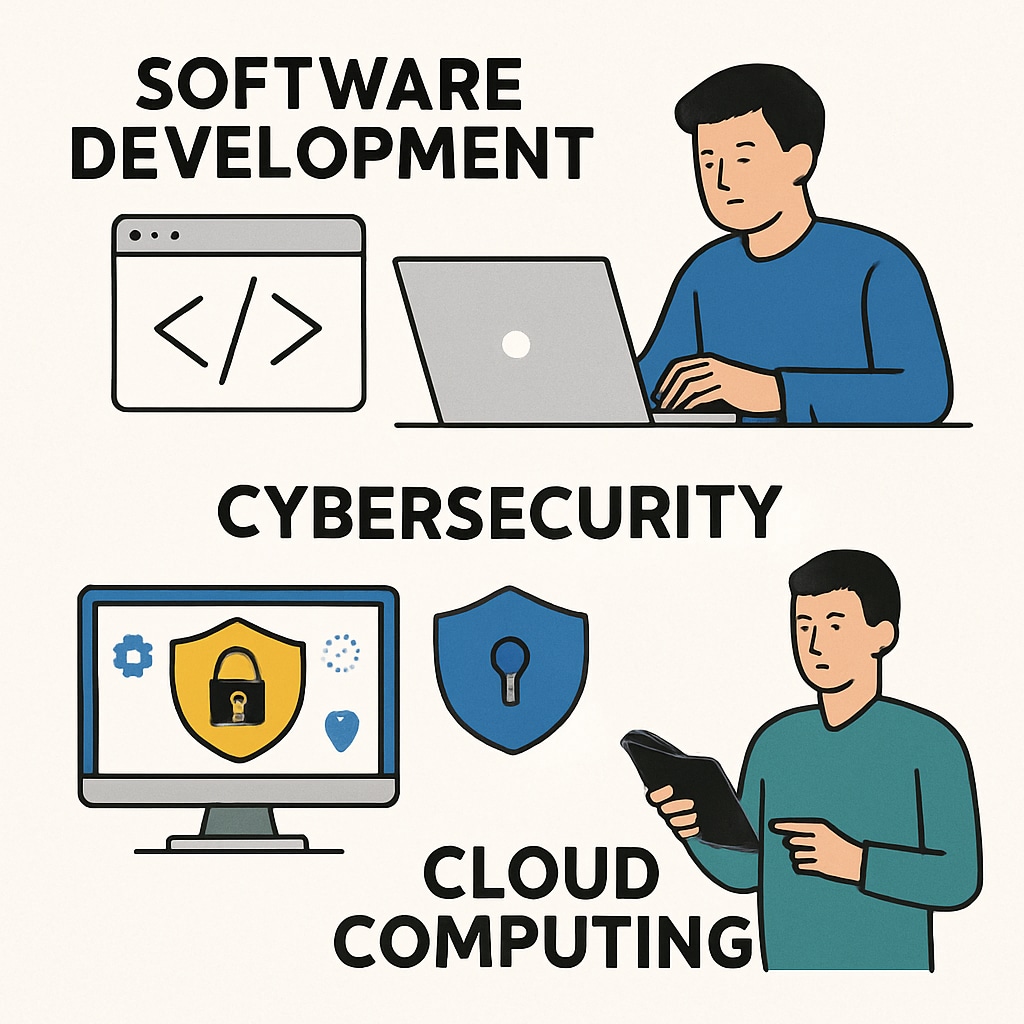Embarking on a career in IT can be both exciting and overwhelming for high school graduates. With numerous options for college majors, career planning in the field of IT requires careful consideration. This guide explores how to select the right major, offering insights into career prospects, personal strengths, and effective learning paths.
Understanding the Landscape of IT Majors
The IT industry is diverse, offering specializations in areas such as software engineering, cybersecurity, data science, cloud computing, and artificial intelligence. Each field has unique job roles and requirements. For example, data science focuses on analyzing large datasets to make informed decisions, whereas cybersecurity revolves around protecting systems from digital threats.
To make an informed choice, students should research each major thoroughly. Consider questions such as: What are the typical job roles in this field? What skills are in demand? What are the long-term growth prospects?

Matching Career Goals with Personal Strengths
Choosing a major shouldn’t solely depend on market trends; it should also align with a student’s interests and abilities. For example, students who enjoy problem-solving and logical thinking might excel in software engineering, while those with a keen interest in security and risk management could find cybersecurity more engaging.
Here are some actionable steps for self-assessment:
- Reflect on subjects or activities you excelled at during high school.
- Take career aptitude tests to understand your strengths.
- Speak to professionals in the IT field to gain real-world insights.
Matching your natural abilities with a career path will not only increase your chances of success but also make your academic journey more enjoyable.
Building a Learning Path in IT
Once you’ve chosen a major, it’s important to understand the academic and skill-building journey ahead. Most IT degrees include foundational courses in programming, databases, and system architecture. Specialized classes in areas like machine learning and ethical hacking are often offered in later years.
Students should also focus on extracurricular learning opportunities, such as:
- Internships to gain hands-on experience.
- Joining coding bootcamps to sharpen technical skills.
- Participating in hackathons to solve real-world problems.
- Obtaining certifications like AWS, Cisco, or CompTIA.
Building practical skills alongside your academic education will make you stand out to employers.

Looking Ahead: Career Outlook in IT
The demand for IT professionals continues to grow globally. According to the U.S. Bureau of Labor Statistics, employment in computer and IT occupations is projected to grow 15% from 2021 to 2031, much faster than the average for all occupations (source).
Some of the fastest-growing roles include:
- Data Analysts and Scientists
- Cybersecurity Specialists
- Cloud Computing Engineers
- AI and Machine Learning Developers
As a result, choosing an IT major that aligns with these opportunities can significantly boost your employability and earning potential.
Conclusion: Taking the First Step
Career planning, college major selection, and IT fields require thoughtful decisions. By understanding the industry, assessing personal strengths, and pursuing relevant learning paths, high school graduates can confidently step into the world of technology. Remember, the journey is not linear—exploration and adaptability are key to finding your niche in IT.
Readability guidance: Use short paragraphs and lists to break down complex ideas. Employ transition words such as “therefore” and “in addition” to improve flow. Focus on actionable advice to keep the content engaging.


